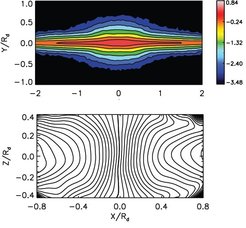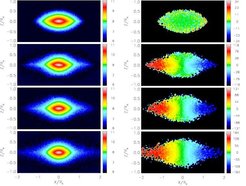
Snapshot of the edge-on surface density (above) and velocity map (below) for the one of the simulated galaxies. Boxy/peanut (BP) bulged typically display cylindrical rotation. However, this model, containing an initial classical bulge, displays departures from cylindrical rotation beyond ≈ 0.5Rd.

Edge-on surface density and velocity maps for the bulge particles alone at four different epochs during the secular evolution. Initially the bulge is non-rotating and flattened by the disc potential later on the classical bulge aquires the characteristic cylindrical rotation.

